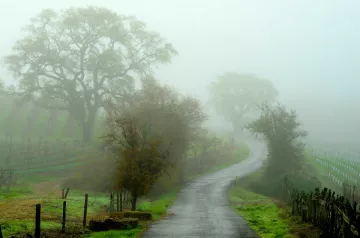
As most or all of our readers know, the Sierra Club Napa Group works for the protection of wildlife habitats, agricultural lands and watersheds, while accommodating affordable housing and transportation of the local workforce.
The Napa Group strongly supports conserving lands for endangered or threatened wildlife in Napa County. One approach we endorse would be for Napa County to adopt a Habitat Conservation Plan (HCP) and/or Natural Community Conservation Plan NCCP). These plans map out a bioregion to determine where the targeted species are located and then work to protect that habitat as part of the General Plan.
HCP’s and NCCPs conserve, restore and purchase lands and place conservation easements on private lands. An HCP is different from the current Environmental Impact Review process in that the entire Napa bioregion would be mapped and a baseline of targeted species would be put together before development plans are considered.

In other California regions, this process has been shown to save time, eliminate opportunities for litigation and streamline the permit process. The advantage to the developer is that projects are accelerated because the biological mapping and conservation plans are already completed.
Yolo, San Diego, Santa Clara and Contra Costa are just a few of the California counties with functioning HCP/NCCPs and there are currently about 30 counties/cities with HCPs plans. These plans usually take 3-5 years to organize and gain community consensus and they are voluntary.
In East Contra Costa, the HCP/NCCP has conserved more than 14,000 acres and brought in $90 million from federal/state grants and developer permit fees. Initial funding for these plans is applied through the U.S. Dept. of Fish and Wildlife and the California Dept. of Fish and Wildlife.
When completed, the HCP/NCCP in Napa County would:
- Identify suitable conservation properties.
- Survey and monitor preserves.
- Determine coverage under permits.
- Maintain a database of relevant preserve information.
- Track habitat loss and acquisition.

While the Sierra Club Napa Group supports a HCP/NCCP for Napa County, it is still up to the Napa County Board of Supervisors to move forward to study whether these plans would be the best conservation effort for the county.
The first steps would be to map out baseline data on private land available for conservation, habitat need and a list of threatened/endangered species to protect. Ideally, this can and should be done in close conjunction when Napa County revises its General Plan.
A group of supporters has formed—“The Napa County Wildlife Habitat Conservation Coalition—which has met three times already to advocate for the adoption of an HCP/NCCP in Napa County. Scott Thomason, Treasurer of the Napa Group, has attended several of the meetings and will continue to update Sierra Club members on the status of these efforts.
The Sierra Club Napa Group is also drafting a Letter in Support of a Habitat Conservation Plan for Napa County to submit to the Board of Supervisors.
In conclusion, adopting a Habitat Conservation Plan (HCP) or Natural Community Conservation Plan (NCCP) represents a pivotal opportunity for Napa County to safeguard its unique ecosystems while streamlining responsible development. These plans offer proven strategies to conserve critical habitats, protect endangered species, and attract funding for conservation efforts—all while creating efficiencies that benefit developers and the community alike. The Sierra Club Napa Group strongly urges the Napa County Board of Supervisors to take the necessary first steps toward exploring this process and incorporating it into the upcoming revision of the General Plan. We look forward to collaborating with other stakeholders, including the Napa County Wildlife Habitat Conservation Coalition, to advocate for a balanced approach that ensures a thriving future for Napa’s natural heritage and its residents.